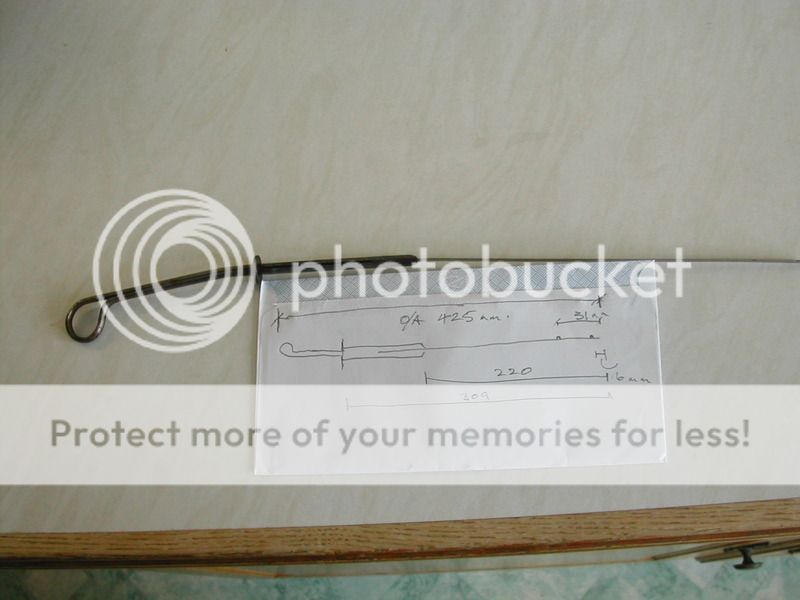bob hughes
Luke Skywalker
Offline
Hi guys
It is time for an oil change so I visited Bill Rawles for a supply of Mr. Penright's finest Classic 20-50. He was out of the stuff but we then had a discussion about how much should go in. OK we all know that something like 12.5 pints - 13 pints should do the trick and indeed it did when I had a steel sump. I upgraded to a DW normal Ali sump (they do a flatter type as well apparently) and put just 8 pints that came up to the mark - very strange. Bill thought that it may be the wrong dipstick for the car, I do not believe so, I have put some measurements to it and wondered if you BJ7 ers can verify that I have the correct unit or not.
All I can say is that it was correct with a steel sump so I am maintaining that the DW sump is thicker and that the meat of the metal is on the inside of the sump - ergo 8 pints up to the top mark - I have shown the positions of the low and full marks with dots.


Bob
It is time for an oil change so I visited Bill Rawles for a supply of Mr. Penright's finest Classic 20-50. He was out of the stuff but we then had a discussion about how much should go in. OK we all know that something like 12.5 pints - 13 pints should do the trick and indeed it did when I had a steel sump. I upgraded to a DW normal Ali sump (they do a flatter type as well apparently) and put just 8 pints that came up to the mark - very strange. Bill thought that it may be the wrong dipstick for the car, I do not believe so, I have put some measurements to it and wondered if you BJ7 ers can verify that I have the correct unit or not.
All I can say is that it was correct with a steel sump so I am maintaining that the DW sump is thicker and that the meat of the metal is on the inside of the sump - ergo 8 pints up to the top mark - I have shown the positions of the low and full marks with dots.


Bob

 Hi Guest!
Hi Guest!

 smilie in place of the real @
smilie in place of the real @
 Pretty Please - add it to our Events forum(s) and add to the calendar! >>
Pretty Please - add it to our Events forum(s) and add to the calendar! >> 






